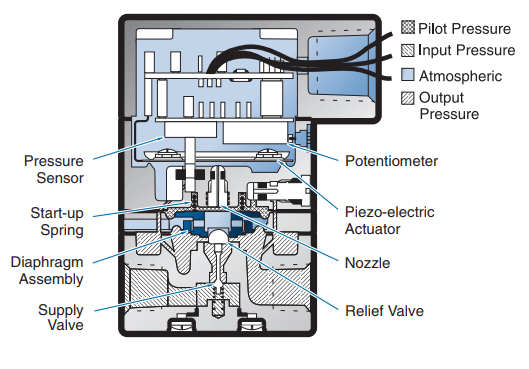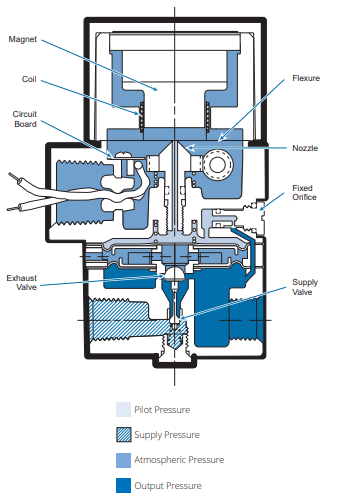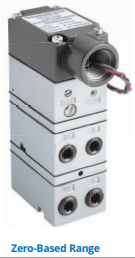Sign up for the ControlAir newsletter.
Get news, updates, and offers direct to your inbox.
Quite often we are asked the question “what happens to the output pressure if there is no electrical signal to an I/P transducer”? The answer to that question depends on both the type of I/P as well as the output range. In this post, we’ll take a look at the Type 500, Type 550, and Type 900 in both the non-zero-based model and the zero-based model.
Type 500, Type 550 & Type 900, non-zero-based units


Both of the above units (Type 900 and Type 500) operate on similar principles, a downward force is applied, via a start-up spring, to the diaphragm in the pilot chamber which in turn opens a supply valve to generate a small amount of output pressure. During electrical regulation, while the mechanism that increases this downward force differs, in both cases you’ll notice that the pilot chamber is fed via air on the output side of the unit. What this means, is that in a non-powered situation we would expect there to be some amount of air that passes from supply to output. Without this air, the pilot chamber would not be able to apply a force on the supply valve.
In the case that the Type 900 loses power, the Piezo-electric Actuator will relax and cease to regulate pressure in the pilot chamber. However, the start-up spring will continue to apply downward force to the supply valve, which will allow a small amount of air through. The pressure of this air, and the output pressure, is expected to be at 1.5 PSI.
In the case that the Type 500 or Type 550 loses power, the Flexure will relax and cease to regulate pressure in the pilot chamber because there is no current running through the coil to induce an opposition force to the magnetic field. Just like with the Type 900, the start-up spring will continue to apply downward force to the supply valve, which will allow a small amount of air through. The pressure of this air, and the output pressure, is expected to be at 1.5 PSI.
Type 550 & Type 900, Zero-based units

The zero-based I/P transducers, namely the Type 550 and Type 900, operate similarly to the non-zero-based units with a couple of exceptions. Both units have a negative bias spring acting upwards against the diaphragm in the supply fed pilot chamber. Additionally, the Type 550 contains a secondary pilot chamber, which is fed pressure from the primary pilot chamber. For both of these units, we would expect the output pressure of the device to be 0 PSI until enough pressure has built up in the pilot chamber to overcome the negative bias spring. Therefore, if either unit were to lose power, the output pressure would quickly drop to 0 PSI.
Summary of Unit Output when Electrical Input is Lost
| Non zero-based | Zero based | |
| Type 500 | 1.5 PSI | 0 PSI |
| Type 550 | 1.5 PSI | 0 PSI |
| Type 900 | 1.5 PSI | 0 PSI |